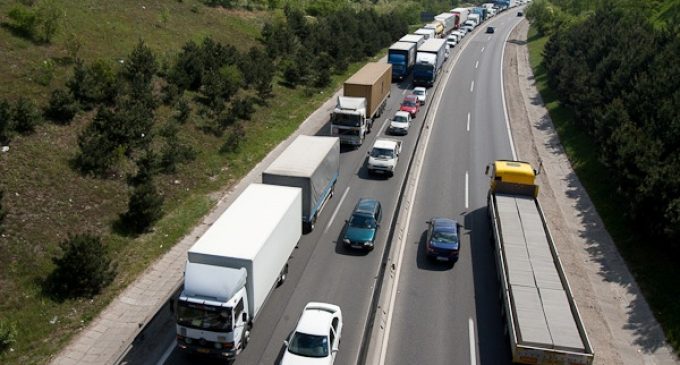5 Key Reasons Behind the HGV Driver Crisis

As the current shortage of HGV drivers causes widespread chaos across multiple sectors, the fragility of our national supply chains is laid bare.
Nandos have shut some 75 outlets, M & S have threatened to reduce opening hours, while KFC has reduced its menu to cope with missing ingredients. In Reigate and Woking, green bins have gone uncollected, while Aldi said it was unable to deliver to 600 shops due to dwindling driver numbers.
Current data by the Road Haulage Association (RHA) estimates that there is a need for 100,000 more HGV drivers in the country. Their research also shows that some 2,000 drivers are leaving the sector per week.
Tescos have offered a £1000 signing bonus for new drivers, with M & S has upped the ante with £5000 in incentives for drivers that stay with them long enough.
Multiple Factors Define the UK’s Logistics Crisis
While the HGV sector has been affected, like most industries, by COVID-19, a number of other factors are contributing to the current crisis.
The Road Haulage Association estimates that around 30,000 drivers have stopped operating in Britain since it left the European Union’s single market in January. COVID has also impacted the normal processing of new driver tests with some 25,000 few certificates issued last year than in 2019.

Government Pledges Support in Open Letter to Haulage Industry
Recognising the extent of the crisis the British government has written a letter to the haulage industry pledging to work with industry leaders to attract new drivers, simplify training and encourage people to stay in the industry.

“We know the challenges are serious”, the letter says “and whilst it is for industry to lead, we are here to help.”
Proposed government measures include:
- a consultation to discuss whether drivers can to take one test to drive both an articulated and rigid lorry
- the revised Large Goods Vehicle Driver apprenticeship standard
- allowing trainers to actually examine drivers in the off-road manoeuvres part of the HGV driving test
This set of measures will kickstart that help, easing pressure on the sector as we work together to attract new drivers, improve conditions and ensure the industry’s future is a prosperous one.
Transport Secretary Grant Shapps
Private Sector IR35 Reform Impacting the HGV Crisis
As the RHA survey shows, this years introduction of IR35 for the private sector is already having huge impacts on specific sectors.
IR35 Legislation prevents drivers from operating through limited companies in order to save tax and NI Contributions.
In a letter to Boris Johnson, published on their website, the RHA writes:
“The introduction of IR35 has resulted in agency labour withdrawing their services as low-profit margin logistics businesses (typically 2-3%) cannot sustain demands for £5-£6 per hour rate increases. For clarity, we welcome legislation that ensures fair and equal tax for all. However, Government must now recognise the repercussions of this and the other issues mentioned and urgently intervene to help us to resolve the resulting crisis.”
Article Sources
Nomisweb.co.uk – Official Labour Market Statistics, Large Goods Vehicle Drivers Population Survey
RHA – A Report on the Driver Shortage



























